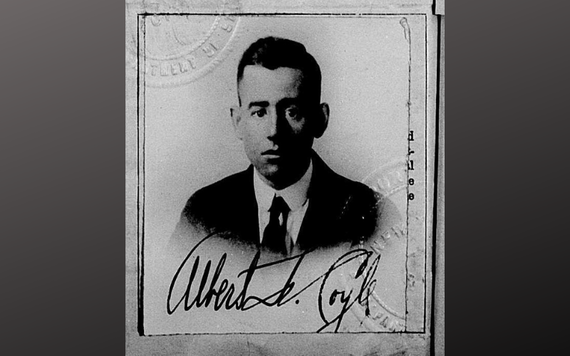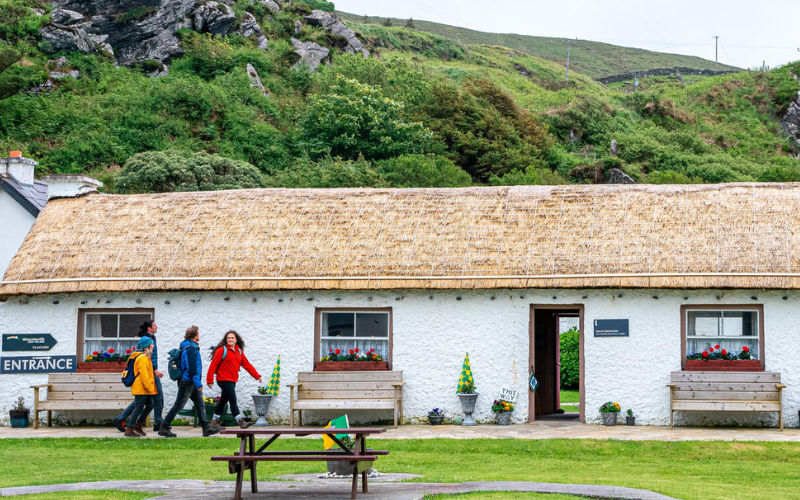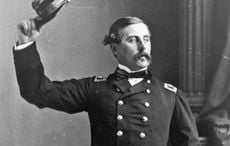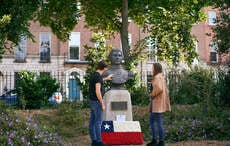In 1943, a New York court heard how Albert Coyle had "gotten more unfortunates out of German concentration camps than any other living American." Yet today, Coyle’s name has almost disappeared from history. So who was Albert Freeman Coyle and what did he do to merit such claims?
By any measure, Coyle’s life story is epic. Born Albert Freeman Coyle in California in 1891, he had lost his father, Joseph, while a young boy. Joseph Coyle was reputedly born in New Orleans in 1852, apparently to Irish immigrants. Before his early death, he had worked as a notary, mainly in real estate.
Albert was then able to go to Stanford. He worked for the Stanford President David Starr Jordan and established a reputation for himself as a public speaker. While there he married a fellow student, Margaret Kennedy. In 1915, he obtained a degree in law and a scholarship to complete further studies at Yale. He took International Law, Sociology and Political Economics as well as in Divinity (Coyle had been raised a Methodist).
When the United States entered the First World War in 1917 poor eyesight prevented Coyle from gaining entry to the military. Instead, he joined the YMCA which provided canteen and support services both behind the lines and at the front.
In early 1919, Coyle found himself on the Arkhangelsk front, in Russia, where the US, Britain, and others fought for the Russian ‘Whites’ against the Bolsheviks. Captured by the Bolsheviks after the US Army withdrew, he was held prisoner for several months and managed to learn Russian. He already spoke French and German and could read Latin and Ancient Greek. He also later learned Spanish.
On his return to the United States, he completed his studies and graduated from Yale in 1920. His former Stanford mentor, David Starr Jordan, secured him a post in Washington D.C. as the official recorder at the hearings of eye-witness testimony about the actions of the RIC and British Army in Ireland.
Coyle compiled and published more than 1,100 pages of testimony as ‘Evidence on Conditions in Ireland’ in 1922.
During this time Coyle became progressively more involved in social and labor issues, working for the BLE, the Brotherhood of Locomotive Engineers. Under it’s President, Warren Stone, it accumulated $150m in assets and a wide range of investments.
Coyle, though, by now an ardent admirer of the Soviet Union was publicly ‘outed’ as a communist in the mid-1920s. He also began to spend time overseas on various delegations to Mexico, Europe, and Russia meeting Stalin, the former German Kaiser and Irish luminaries such as Sir Horace Plunkett.
Back in the United States, he began to represent the Russian travel bureau of International Express (there were a lot of exchanges of material and expertise between the United States and the Soviet Union in the late 1920s).
Coyle acted for Soviet Union financial interests in the United States including length legal actions to try and secure control of Russian assets frozen by American courts after the Russian Revolution.
By the mid-1930s Coyle was lobbying both for the United States to formally recognize the Soviet Union and for Coyle himself to be appointed the ambassador.
In the mid to late 1930s, Coyle was also involved in other attempts to recover bondholder funds, in Bolivia, Cuba, and the Philippines. He occasionally drew snide comments bot for his left-wing political background and involvement with isolationist politicians who objected to potential US involvement in another world war.
By the late 1930s, then, Coyle was a regular international traveler to Europe. At that time most states had strict visa policies, with many even stricter for Jews.
On one visit to London, in May 1939, he was interviewed by the press and said, “Right now I am fixing things for 36 people to quit Germany. I make four or five trips to Europe a year and in the past three years have obtained the freedom of nearly 500 people. Many of them were either in prison or in concentration camps. I rarely see the people themselves but deal direct with the Gestapo, the German secret police.”
Four years later he was being described as having "gotten more unfortunates out of German concentration camps than any other living American."
So, has history simply forgotten Albert Freeman Coyle? Is it really plausible that Coyle could have been instrumental in saving so many people only for his name to almost disappear from the historical record? Rebecca Erbelding of the United States Holocaust Memorial Museum is one of the foremost historians on Jewish refugee immigration to the United States. Yet Coyle’s isn’t a name that is familiar to her.
Coyle certainly had a background in international law, language skills, knowledge of travel from Europe to America and a wide network of contacts. He was in correspondence with leading figures in the campaigns to bring academics to the United States, heads of refugee organizations, leading political figures and prominent Jewish legal figures in Germany and Austria.
Coyle described one route from Europe to America via Vera Cruz in a letter to Felix S. Cohen. Similarly, his name crops up in accounts of various individuals in places like Mannheim in Germany in 1939 and with individuals traveling conventional routes across the Atlantic. Coyle’s known clients weren’t all successful. Moritz Zalman (a prominent anti-semitism campaigner, below) died in Sachsenhausen in May 1940 while Hertha Breuer (a feminist and jurist) was murdered in Ravensbruck in 1942.
Many of Coyle’s known clients were lawyers and some, like Hertha Breuer, were known to be Communists. And, as Coyle himself pointed out in 1939 – he rarely saw the people themselves. Another reason for Coyle’s name to become obscured may have been due to a series of court cases taken against him in New York in the early 1940s. These were based on claims that Coyle was no longer licensed to practice law within the US and thus had received fees fraudulently. Ultimately Coyle’s defense was successful but the case against him may equally have been motivated by his left-wing politics and general official hostility to people who were trying to facilitate European refugees reaching the US.
In the late 1940s and early 1950s, until his death in 1956, Coyle continued to publicly support the Soviet Union.
So, what is the truth about Albert Freeman Coyle? Did he save more than 500 people from the Nazis?
It isn't clear yet but Coyle's story is only starting to emerge so keep an eye out for him. Hopefully, more will come to light that helps fill in gaps in his story – indeed if anyone is aware of any relevant leads they can drop me an email at [email protected] (you never know what bit of information is important)! And, on a cautionary note - as much as we'd like to believe there were many heroes around saving Jewish refugees from the Nazis - the sad truth is they were few and far between and vastly outnumbered by villains.
So, it turns out that Albert Coyle is one of the heroes, his name deserves to be more widely known.
* Originally published in 2020. Updated in 2025.
This article was submitted to the IrishCentral contributors network by a member of the global Irish community. To become an IrishCentral contributor click here.




Comments